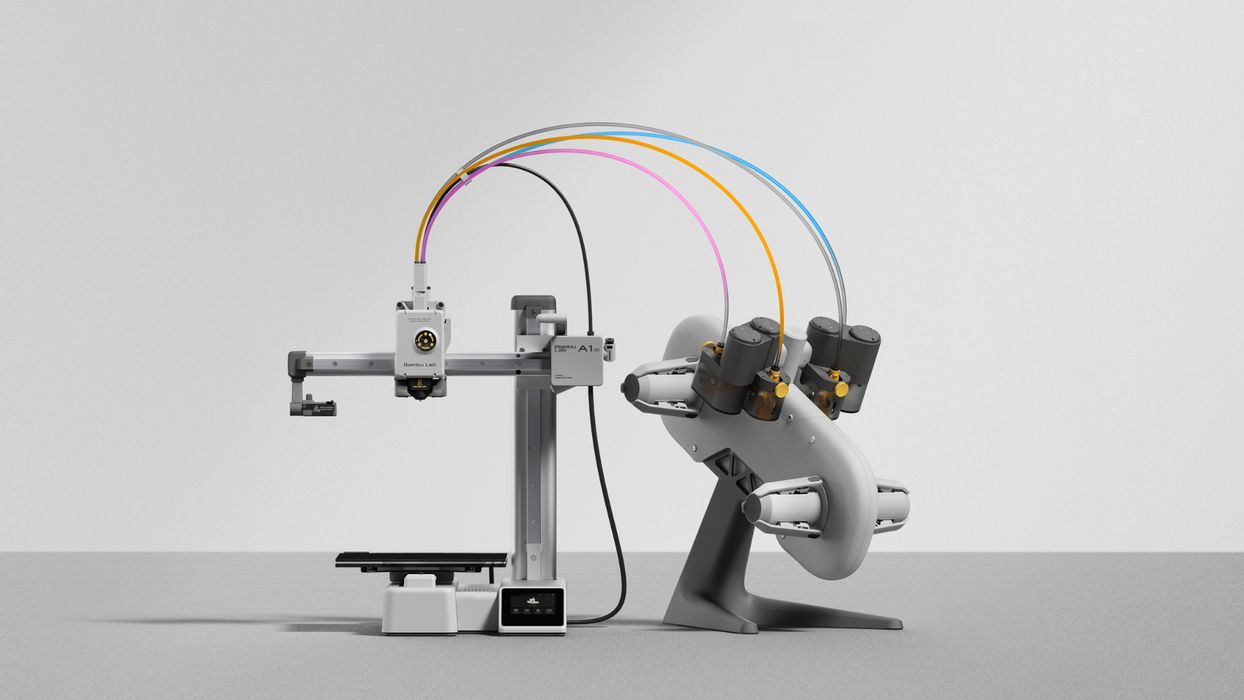
I’ve been thinking about Bambu Lab’s latest 3D printer announcement, and there are several important implications.
If you haven’t yet heard, upstart 3D printer manufacturer Bambu Lab has launched into another domain of 3D printing: low cost desktops. Their new A1 mini device sports an incredible array of features at very attractive pricing.
https://www.fabbaloo.com/news/the-a1-mini-bambu-labs-affordable-3d-printer-with-premium-features
I’ve been writing for several months now about how the low cost desktop market is being turned upside down by the arrival of high speed 3D printers. The development of vibration compensation firmware (sometimes called “input shaping” or other terms) allows these devices to run significantly faster without fear of vibrations destroying print quality.
After using several “high speed” devices, I’ve come to a couple of conclusions:
- Every low cost desktop 3D printer manufacturer had better shift into high speed devices
- Material providers must turn their inventory upside down soon
- Some manufacturers will inevitably disappear if they don’t keep up with the high speeds
- “Slow” 3D printers will soon be viewed as “junk”
Faster 3D printers are not just faster: they are more effective. A device that prints four times faster is essentially like having four slow printers. This means that selling large batches of slow printers to low volume manufacturers for farms is not going to be as big a thing anymore.
If the high speed twist was enough to shake up the 3D printer market, then the A1 mini pushes it way farther.
The low cost high speed desktop 3D printers emerging from manufacturers are, more or less, sped-up variations of prior products. They have the same kinds of print plates, motion systems, software environment, etc. Aside from the higher speeds, they are mostly the same as operating previous products.
Then we see the A1 mini, which is quite a different machine. It leverages much of the powerful calibration found in that company’s higher cost devices, but adapted for low cost platforms. This means that print quality should not be a big concern with the A1 mini, and especially not calibration, which is entirely automated. Their software environment seems to provide a more friendly end-to-end experience that could be far easier to use.
There’s a place this is now headed: consumer 3D printing.
Back in 2014/15 it was generally thought that consumers might adopt desktop 3D printers for general use. However, that idea collapsed when consumers found the devices to be vastly more difficult to use than expected.
DIY operators had no problem, but the general public simply can’t handle that level of tech. Despite numerous attempts to simplify matters, no desktop 3D printer manufacturer has properly broken into the true consumer market. And the consumer market is many, many times larger than the DIY market.
Years ago those companies that started with intentions of operating in the consumer market by and large abandoned it, shifting to the smaller but more profitable professional or educational markets.
Today we see desktop 3D printers generally only in homes occupied by tech-savvy individuals.
I have a feeling that Bambu Lab is working towards changing that. The A1 mini has so much automation that there’s really not much to do. In addition, they have simplified the user environment greatly to remove much of the potential confusion.
My suspicion is that the DIY 3D printer folks won’t like that at all because they won’t have access to this or that setting. That’s ok, because I predict the A1 mini is the first of a series of devices targeting actual consumers, not tech-savvy individuals. Each will have increasingly simplified interfaces and operating procedures.
Remember, Bambu Lab was founded by a group of people that had previously worked for DJI, the company that finally figured out the formula to simplify drones so that anyone (read: consumer) could operate them. Today DJI is a massive company dominating that market.
It’s not surprising, the DJI drones are incredibly well designed — both in hardware AND software. The latter is frequently ignored by most Asian manufacturers, and that could be a major problem for them in the very near future.
I think Bambu Lab wants to do the same thing, except with desktop 3D printers.
The reaction from competing providers of low cost desktop 3D printers will be to catch up, but by the time they produce printers that are as advanced as the A1 mini, Bambu Lab will most likely have moved on to an even more sophisticated platform.
